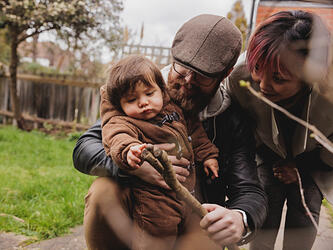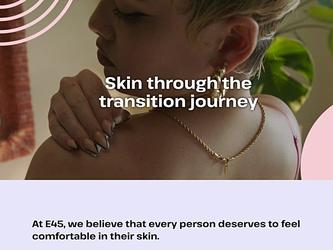Inclusive journeys: RNIB research on making transport more accessible
How was your journey today?
Travel is an essential part of everyday life – but it’s not just getting from A to B. It’s about earning an income, catching up with friends and family and exploring new places. It’s the bridge that connects us to the wealth of experiences the world has to offer.
For blind and partially-sighted people (BPSP), travelling independently is a critical factor in improving quality of life and achieving a sense of autonomy. People with sight loss are unable to drive, so for journeys that cannot be made by walking, they rely on public transport, taxis, and lifts from friends and relatives. With a breadth of accessibility issues, however, using public transport can be a daunting experience for people with sight loss.
Sight loss charity RNIB believes that accessible design is better for everyone: creating solutions to barriers can deliver a greater sense of independence and an improved public transport service for all. With funding from charity Motability, RNIB was able to dig deeper into the unique challenges of journeys made by people with sight loss through an in-depth programme of research.
This research involved a client-agency partnership in which RNIB conducted some of the research in-house through its ongoing ‘voice of the customer’ programme and brought in 2CV for the ethnographic study. There was a high response rate to participation in the research; the tracker survey usually gets around 400 responses, but this round received 512 – which made recruitment a more straightforward process than expected and, crucially, highlighted just how important this research, and its aims, are perceived to be among people with sight loss. The research programme comprised:
- Quantitative: Telephone interviews and online surveys with 512 BPSP
- Qualitative: Six focus groups and 10 travel diaries with 18 BPSP
- Ethnographic study: Digital and face-to-face ethnographies across a range of journeys and transport modes across the UK with BPSP, followed by solutions-focused co-creation workshops.
Creating an accessible digital ethnography experience was critical to 2CV’s approach. It invited blind and partially sighted participants to document journeys using a research platform with accessibility features, including high contrast mode, accessible rich internet applications (Aria) attributes, and offline access. The digital ethnographies being moderator-free meant that journeys could be as natural as possible, and they provided the opportunity for participants to independently tackle any travel disruptions and report back.
Beyond this, 2CV factored in several accessibility considerations, including: avoiding visual stimulus during workshops; co-designing questions with participants to inform future digital ethnography studies; and following accessibility guidelines for reporting.
Our research allowed participants to highlight the key challenges they face on public transport. Three findings stand out:
- Travel is a hugely emotional experience
We all know that taking public transport can bring up a range of emotions. For BPSP, the fear of something ‘going wrong’ is felt more acutely. This means they rely much more heavily on advanced planning and a range of ‘workarounds’ or coping strategies that help them access public transport and feel in control. There is a high reliance on personal devices: some do ‘practice runs’ and many avoid specific modes, unfamiliar journeys or certain times of day to reduce anxiety. - Significant gaps in basic information provision
BPSP people rely heavily on audio and accessible visual information when using public transport. However, many feel that basic information is lacking; audio announcements can be suboptimal, and the placement and legibility of signage presents challenges. - Research creates community
One of the most rewarding moments as researchers was sitting back during the co-creation workshops and realising just how powerful research is for bringing those with lived experience together. Beyond generating solutions, the workshops became spaces for BPSP to share stories, tips and tricks for navigating public transport. For those without friends or family members with a visual impairment, the discussions reminded them that they are not alone.
Much of RNIB’s work involves engaging with organisations to offer support in making products and services more accessible – this can involve developing accessibility checklists. The charity used the insights to create a checklist of best practice and changes that could make journeys more inclusive. This research was launched in April 2023, and RNIB called for transport providers to work with the charity to create a transport infrastructure that works better for everyone. RNIB’s business services team provides solutions to such challenges and works with transport hubs and travel providers to embed inclusive design into the customer journey.
It is important that RNIB identifies areas that are going to make the biggest difference for BPSP, and this research highlighted the importance of travel and transport. RNIB will be running test-and-learn cycles to build recommendations for what the perfect app-based solution could look like. It will also make recommendations on how training and support can be delivered to build confidence in technology among BPSP who don’t currently use it.
Most of us don’t think about how we use technology when we travel: we put our maps on when we hop in the car or walk to a new destination; we check the transport times on an app; and our sight means we don’t need anything to tell us at which stop to get off. But if you have sight loss, there are so many hurdles that make this a challenge; you need confidence – and need to be resilient.
This shouldn’t be the case – we have a real opportunity to change experiences for the better.
Harriet Bird is senior insight analyst at RNIB and Abigail Plank is research manager at 2CV

We hope you enjoyed this article.
Research Live is published by MRS.
The Market Research Society (MRS) exists to promote and protect the research sector, showcasing how research delivers impact for businesses and government.
Members of MRS enjoy many benefits including tailoured policy guidance, discounts on training and conferences, and access to member-only content.
For example, there's an archive of winning case studies from over a decade of MRS Awards.
Find out more about the benefits of joining MRS here.













1 Comment
Anon
2 years ago
That is all very well if the visually impaired person has access to public transport. But areas where there is none (rural uk) people with disabilities have to move away from their homes to a horrible noisy city. No public transport is more frustrating than using ones car, however, it is more frustrating either moving to a city or being stuck, isolated and lonely.
Like Reply Report